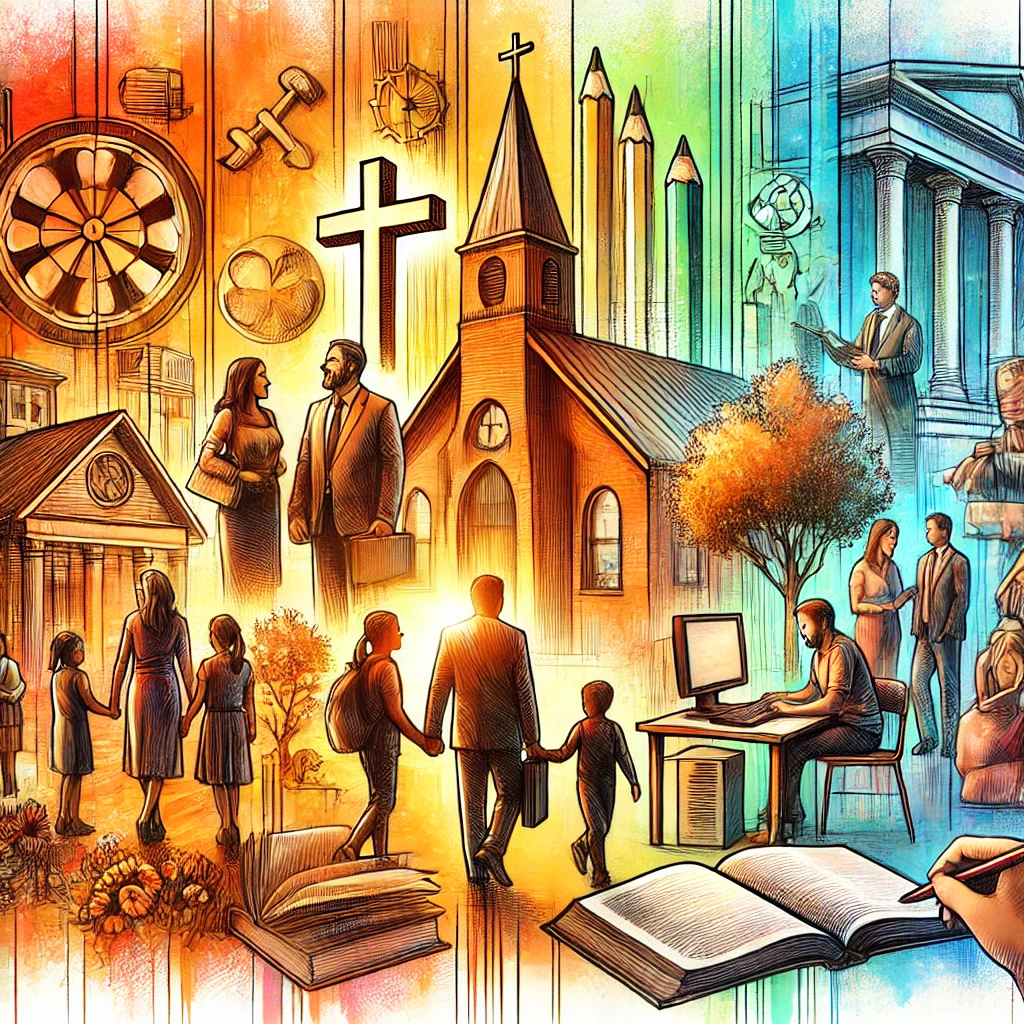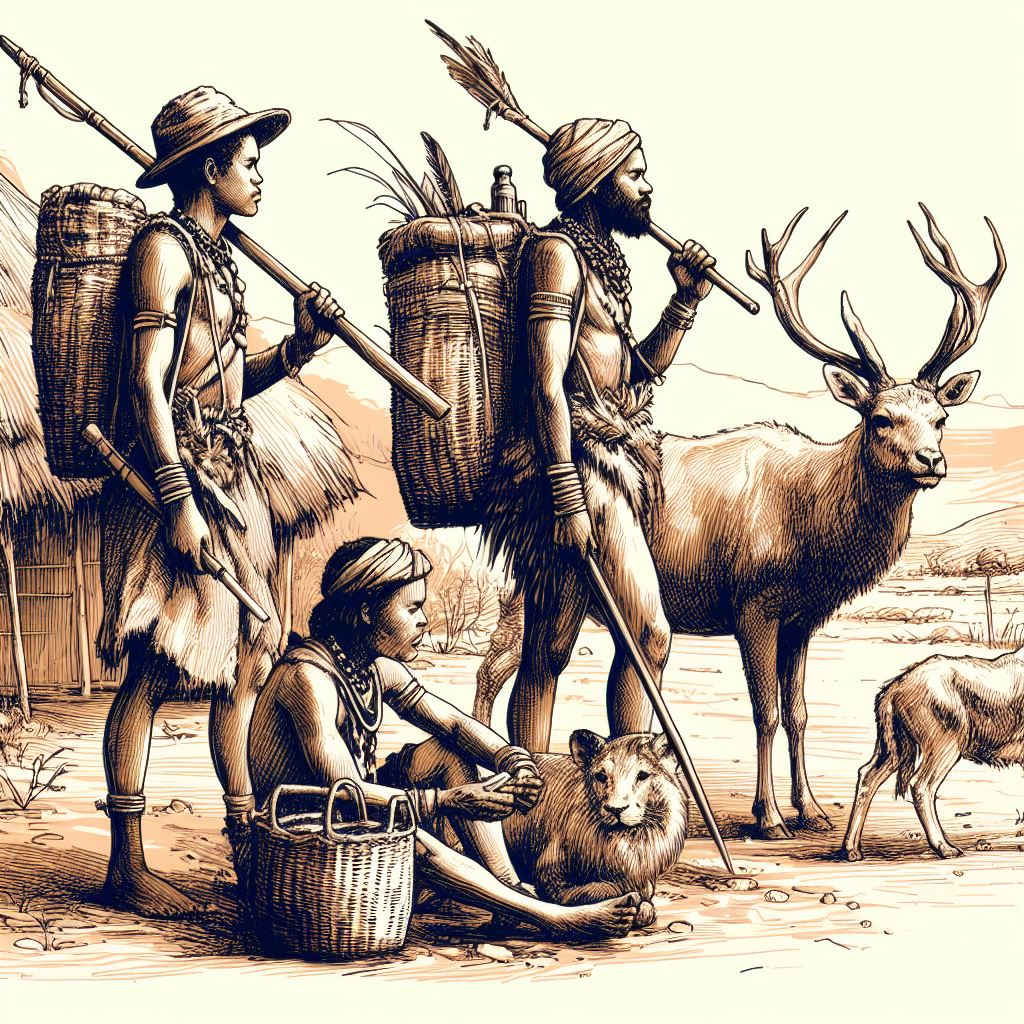Understanding Social Institution
The concept of the social institution (or simply institution) is one of the most important in the entire field of sociology. In fact, Durkheim has gone to the extent of defining sociology as the science of social institutions. The term “Institution” is sometimes used to refer the organizations or associations and sometimes to designate a normal principle that defines a cluster of important behaviour, such as marriage and property. However, organisation and institutions are two different concepts. While the organization is a group formed to meet a specific goal, e.g., a hospital or a business firm. But the institution is not an actual group or association.

The social institution is a system of beliefs, norms, values, positions and activities that develop around a basic societal need or generally, institutions are patterns of norms that define behaviour in social relationships. Habitualised human actions set the stage for the development of institutions. Institutions are the pre-defined patterns of conduct established by the habitualised human actions.
Definitions
MacIver and Page:
Social Institutions may be defined as “established forms or conditions of procedure characteristic of group activity.”
Parson and Smelser:
Social Institutions are the ways in which the value patterns of the common culture of a social system are integrated in the concrete action of its units in their interaction with each other through the definition of role expectations and organization of motivation.”
C.A. Ellwood
Institutions are “the habitual ways of living together which have been sanctioned, systematized and established by the authorities of communities.”
W.G. Sumner:
“An institution consists of a concept (idea, notion, doctrine and interest) and a structure (a framework of apparatus).
Thus, all the above definitions imply both a set of behavioural norms and a system of social relations through which these norms are practised.
Characteristics
- Institutions are social in nature, i.e., they come into being due to the collective activities of the people. The fundamentally social character of institutions represents their most defining feature. Institutions emerge not through individual action but through complex patterns of collective human activity and interaction over time. This social genesis occurs through a process of crystallization where repeated social behaviors, shared needs, and common solutions to collective problems gradually become institutionalized. For instance, the institution of marriage did not arise from a single individual’s decision but evolved through countless social interactions, cultural practices, and collective agreements about organizing familial relationships. This social nature means that institutions cannot be reduced to individual preferences or actions but must be understood as emergent properties of collective human behavior.
- Institutions are universal, i.e., they exist in all societies at all stages of social development. The universal presence of institutions across all human societies represents a crucial insight into their fundamental role in social organization. While the specific forms institutions take vary dramatically across cultures and historical periods, certain basic institutional arrangements appear in all known societies. Every society, for instance, has developed institutional frameworks for education (whether formal or informal), family organization, economic distribution, and social control. This universality suggests that institutions address fundamental human needs and social requirements that transcend specific cultural contexts. However, this universality does not imply uniformity – the way these universal needs are met varies significantly across societies, reflecting different cultural, environmental, and historical circumstances.
- Institutions are Standardized procedures and norms. They prescribe the ways of doing things. Institutions function as standardized systems of procedures and norms that guide human behavior in predictable directions. This standardization occurs through the establishment of clear expectations, routines, and accepted ways of accomplishing social tasks. The standardization process serves multiple functions: it reduces uncertainty in social interactions, minimizes the need for constant negotiation of basic social processes, and creates efficient patterns for meeting social needs. For example, educational institutions standardize not only what knowledge is transmitted but also how it is transmitted, who is qualified to teach, and how achievement is measured. This standardization, while sometimes criticized for limiting innovation, provides the stability and predictability necessary for complex social organization.
- Institutions are the means of controlling individuals. It regulates the conduct of people in society. Institutions serve as powerful mechanisms of social control, regulating individual behavior through both formal and informal means. This control function operates through multiple channels: explicit rules and sanctions, internalized norms and values, and the creation of standardized expectations about appropriate behavior. The control aspect of institutions is not merely restrictive but also enables coordinated social action by making behavior more predictable and aligned with collective goals. For instance, legal institutions not only punish deviance but also create the predictability necessary for complex economic transactions and social relationships to function effectively.
- Institutions came into existence to satisfy the needs of man. Institutions emerge and evolve in response to fundamental human needs, both individual and collective. This need-based character explains both their persistence and their tendency to adapt over time as social needs change. Economic institutions, for example, developed to address the basic need for resource distribution and production coordination. However, these institutions have evolved dramatically as economic needs have become more complex. Understanding the need-based nature of institutions helps explain both their origin and their ongoing evolution, as they must continually adapt to meet changing social requirements while maintaining their core functions.
- Institutions are abstract in nature. They are not external, visible or tangible things. The abstract character of institutions represents one of their most complex features. While institutions manifest in concrete behaviors, structures, and organizations, the institutions themselves exist at an abstract level of social reality. For example, while a courthouse represents a physical manifestation of legal institutions, the institution of law itself is an abstract system of rules, principles, and accepted procedures. This abstract nature means that institutions operate primarily through shared understandings, expectations, and meanings rather than through physical structures alone. This abstraction allows institutions to be both flexible enough to adapt to changing circumstances and stable enough to provide consistent social organization.
- Institutions are relatively stable and permanent and they don’t undergo sudden or rapid changes. The relative stability and permanence of institutions represent crucial features that enable them to fulfill their social functions effectively. This stability does not mean absolute unchangeability but rather a measured pace of change that allows for social continuity while permitting adaptation to new circumstances. Institutional stability operates through multiple mechanisms: the internalization of institutional norms by individuals, the development of vested interests in existing arrangements, and the interconnected nature of institutional systems that makes rapid change difficult. However, this stability exists in dynamic tension with the need for institutional adaptation to changing social conditions. Understanding how institutions maintain stability while adapting to change represents one of the key challenges in institutional analysis.
Types of Institutions
Generally, Institutions are classified as:
Primary Institutions
These are the most basic institutions which are even found in primitive societies, like family, marriage, religion etc. Primary institutions represent the foundational pillars of society, comprising those institutional arrangements that are absolutely essential for society’s survival and continuity. These institutions emerged early in human social development and are found universally across all human societies, though their specific forms may vary culturally. The family stands as perhaps the most fundamental primary institution, serving crucial functions in reproduction, child-rearing, primary socialization, and basic economic cooperation. Similarly, religious institutions, although varying greatly in form and belief systems, represent primary institutions as they address universal human needs for meaning, moral guidance, and explanations of existence. Economic institutions for production and distribution of resources, political institutions for social order and decision-making, and educational institutions for cultural transmission also qualify as primary institutions. The significance of primary institutions lies in their irreplaceability and their deep integration into the fabric of social life. They are characterized by their high degree of social control over individual behavior, their extensive influence over other social institutions, and their resistance to fundamental change. Primary institutions typically command strong emotional attachments from society members and are supported by deeply internalized values and norms. Their violation often results in severe social sanctions, reflecting their crucial role in maintaining social order and continuity.
Secondary Institutions
These Institutions evolved to cater the secondary need of people, e.g., education, law, polity etc. Secondary institutions, while important for social functioning, are less fundamental to society’s basic survival and emerged later in social development to address more specific or specialized needs. These institutions often serve to support, elaborate, or extend the functions of primary institutions. For example, mass media institutions, while significant in modern society, represent a secondary institution that emerged to serve communication needs already partially addressed by primary institutions. Similarly, healthcare institutions, recreational organizations, and various professional associations qualify as secondary institutions.
Secondary institutions generally demonstrate greater flexibility and adaptability compared to primary institutions. They are more likely to undergo significant changes in response to technological advances, cultural shifts, or new social needs. Their sanctions are typically less severe, and they command less emotional attachment from society members. However, in complex modern societies, some secondary institutions have grown so significant that they may appear to rival primary institutions in importance, though they remain fundamentally dependent on primary institutions for their basic framework of operation.
The relationship between primary and secondary institutions is dynamic and complex. Secondary institutions often emerge from the elaboration of functions originally performed by primary institutions. For instance, formal educational institutions developed to handle specialized knowledge transmission that was originally conducted within family and religious institutions. This process of institutional differentiation and specialization continues in modern societies, with new secondary institutions emerging to address increasingly specific social needs. However, in contemporary society, the distinction between primary and secondary institutions sometimes appears to blur, particularly as some secondary institutions take on greater significance in daily life.
W.G. Sumner also classified institutions into two types:
- Cresive: Those that evolved or developed naturally, unconsciously and spontaneously; and take shape in the mores are known as cresive institutions, e.g., property, marriage, religion etc.
- Enacted: These are established consciously and purposefully and in a planned way, e.g., education, banking etc. It resembles with secondary institutions.
Major Institutions in Society
- Marriage (for regulating sex relationships).
- Family (for socialising new members and provisions of group life).
- Kinship (tracing the link/relationship between individuals).
- Religion (for regulating the belief system of society).
- Economy (regulates the system of production and distribution of wealth).
- Polity (procedure for regulation of power structure).
- Education (provisions of formal learning process).
Functions of Institution
- Institutions contribute to the fulfilment of fundamental human needs, like self-perpetuation and self-expression.
- Institutions prescribe a particular way of behaviour for the fulfilment of our needs.
- Institutions play an important role in social control by regulating human behaviour.
- Institutions assign roles and statuses to individuals.
- Institutions contribute to unity and uniformity in society.
Difference between Associations and Institutions
When men create associations they must also create rules and procedures for the regulation of the members to one another and for the dispatch of common business. Such forms are usually institutions. The following table shows the difference between association and institution.
| Association | Institution |
| Association is a group of people organised for the purpose of fulfilling a need or needs. | It represents common procedures. It is an organised way of doing things. |
| It consists of individuals. | It consists of rules and procedures. |
| Associations are concrete. | Institutions are abstract. |
| Associations are mostly created or established. | Institutions are primarily evolved. |
Thus, Institutions are the standardized norms and procedures (ways of behaviour) that develop around a basic societal need by habitualized human actions (permanent human activity).



Thanks for sharing your thoughts.
I am not sure where you’re getting your info, but great topic.
I needs to spend some time learning much more or understanding more.
Thanks for wonderful information I was looking for this info for
my mission.
Awesome issues here. I’m very satisfied to look your article.
Thanks a lot and I am looking forward to touch you. Will you kindly drop
me a e-mail?
I like the valuable info you provide to your articles.
I’ll bookmark your blog and take a look at once more here frequently.
I am relatively sure I will learn lots of new stuff proper here!
Best of luck for the following!